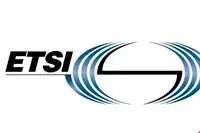 The new Radio Equipment Directive (RED) has came into force in Europe. It aligns the previous Directive with the new legislative framework for the marketing of products, setting requirements for safety and health, electromagnetic compatibility and the efficient use of the radio spectrum.
The new Radio Equipment Directive (RED) has came into force in Europe. It aligns the previous Directive with the new legislative framework for the marketing of products, setting requirements for safety and health, electromagnetic compatibility and the efficient use of the radio spectrum.
Unlike the previous Directive, RED puts emphasis on receiver requirements in order to enhance efficient and effective use of the radio spectrum. In particular, it now covers end products using radio for communications or to determine position, such as satnavs.
The RED applies to equipment which intentionally transmits or receives radio waves for communications or radio determination, regardless of its primary function. For example, a ‘connected’ device that uses an embedded radio module for communications or to determine its position has to meet the same radio requirements as purpose built radio equipment.
Manufacturers will need to demonstrate the performance of receiver, as well as transmitter, as both are considered to affect the efficient and effective use of the spectrum.
To assist industry, ETSI has released a guide for the application of articles 3.1b (EMC) and 3.2 (effective and efficient use of the radio spectrum) of the RED (EG 203 367), which covers equipment ranging from satellite communications to products operating at frequencies of less than 9kHz.
While EU Member States have to apply the provisions of the new Directive from 13 June 2016, manufacturers who were compliant with the existing legislation (RTTED or LVD/EMCD) have until 13 June 2017 to comply with the new requirements, after which time the R&TTE Directive will be repealed.
Last year, the European Commission requested ETSI and CENELEC to produce Harmonised European Standards which which manufacturers can use for presumption of conformity. To date ETSI has published 53 of these Harmonised Standards, and a further 143 are expected to be published within the next 12 months.
Luis Jorge Romero, ETSI’s Director General, said: “ETSI recognises the important role it plays serving industry and the European Institutions in delivering the standards necessary to support European single market regulations.”
Author
Graham Pitcher
Source: www.newelectronics.co.uk

